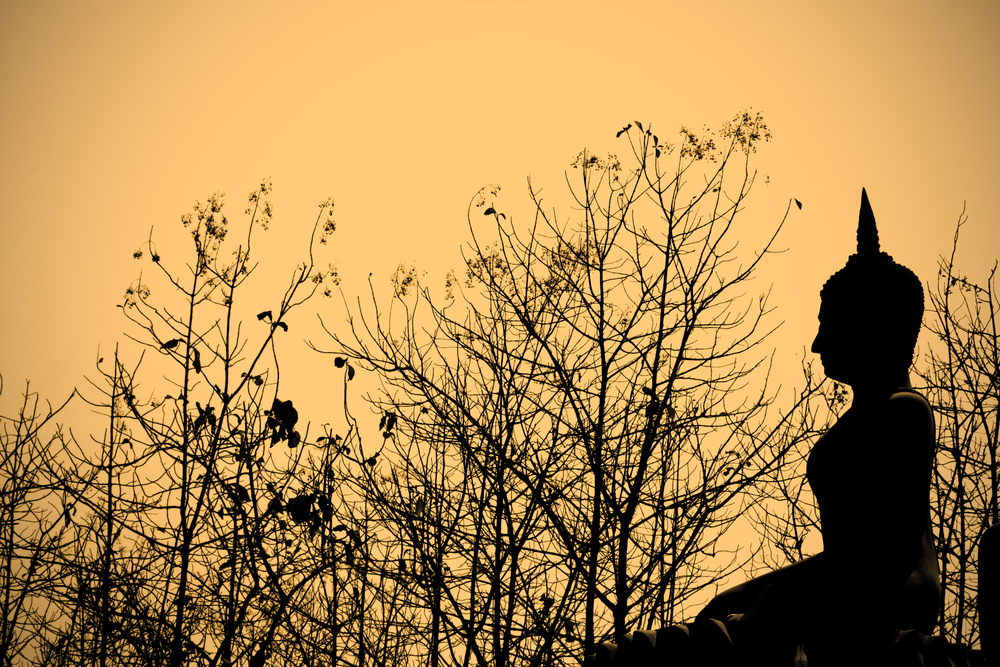“In a world of tension and breakdown it is necessary for there to be those who seek to integrate their inner lives not by avoiding sorrow and anguish and running from their problems, but by facing them in their naked reality and ordinariness.” —Thomas Merton
Anyone who has had even the briefest introduction to Buddhist teaching is familiar with its starting point: the inescapable truth that existence entails suffering. This is called the First Noble Truth. But how difficult it is to fully embrace this truth. When I first became a monk in the forest monastery, Ajahn Chah welcomed me and then said, “I hope you’re not afraid to suffer.” Taken aback by this greeting I asked him what he meant. He continued, “There are two kinds of suffering. There is the suffering you run away from, which follows you everywhere. And there is the suffering you face directly, and in doing so become free.” Of all the maps of Buddhist psychology, the Noble Truths, which teach the understanding of suffering and its end, are the most central. The whole purpose of Buddhist psychology, its ethics, philosophy, practices and community life is the discovery that freedom and joy are possible in the face of the sufferings of human life. The Four Noble Truths are laid out like a psychological diagnosis: the symptoms, the causes, the possibility of healing and the medicinal path.
As healers, therapists, or friends, when people come to us for help, we are first a witness to their suffering. Whatever form that suffering takes – conflict, fear, depression, stress, obsession, confusion, mental illness, divorce, trouble with work, family or the law, unfulfilled creativity, or unrequited love – we must willingly acknowledge its truth.
We are also witness to their pain. Buddhist psychology makes a clear distinction between pain and suffering. Pain is an unavoidable aspect of the natural world. It is physical, biological and social, woven into our existence as night is with day, as inevitable as hard and soft, as hot and cold. Inhabiting a human body, we experience a continuous ebb and flow of pleasure and pain, gain and loss. Inhabiting our human society is the same; we encounter praise and blame, fame and disrepute, success and failure, arising and passing endlessly.
Suffering is different from pain. Suffering is our reaction, our contraction, our fears and hatred and grasping in response to the inevitable pain of life. On a personal level this reactive suffering can include anxiety, depression, fear, confusion, grief, anger, hurt, addiction, jealousy, frustration. But suffering is not only personal. Our collective suffering grows from the same reactivity, fears and grasping and turns into the sorrows of warfare and racism, the isolation and torture of prisoners everywhere, the hunger, sickness and abandonment of human beings on every continent. Our individual and collective suffering is called the First Noble Truth of Suffering.
The Second Noble Truth describes the cause of suffering: grasping. Grasping, it explains, gives birth to greed, hatred, and delusion, the three roots of all unhealthy states. From greed, hatred, and delusion arise all other unhealthy states such as jealousy, anxiety, violence, addiction, possessiveness and shamelessness. The forces of greed hatred, and delusion are the causes of individual and global suffering.
The Third Noble Truth offers us the way out, the end of suffering. Unlike pain, suffering is not inevitable. Freedom from suffering is possible when we let go of our reactions, release our fear and grasping, and come to inner peace amidst all things. This freedom is called Nirvana. This is the Third Noble Truth.
The Fourth Noble Truth is the path to the end of suffering. This path is called the middle way. The middle way invites us to find peace here and now. With mindfulness and compassion, we can learn to live neither grasping nor fearing life. We can find wakefulness and freedom in the midst of our joys and sorrows.
Following the middle path, individually and collectively, we establish integrity, we quiet the mind, we learn to see with wisdom. And with wisdom we move through the world acting with care and courage, tending life with a peaceful heart.






